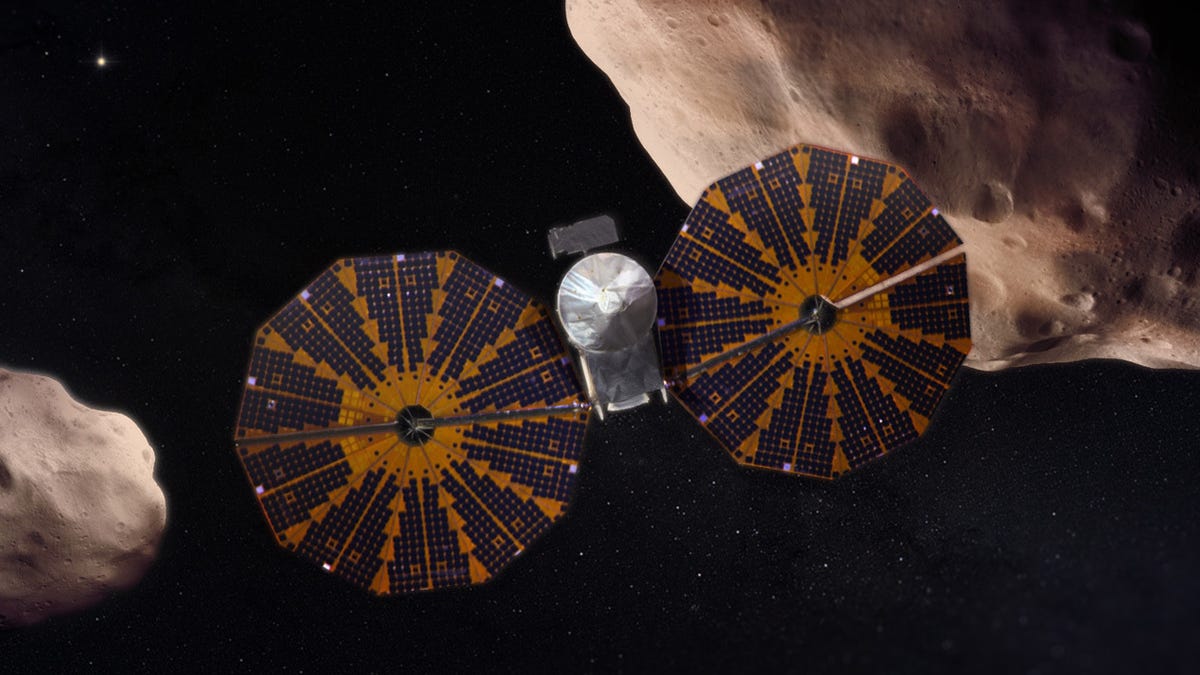
NASA’s Lucy spacecraft will visit a series of asteroids.
NASA
It’s a date. Lucy is set to meet Dinkinesh on Nov. 1.
NASA’s Lucy mission launched in October 2021 on a long journey to explore the Trojan asteroids far out near the orbit of Jupiter. Up until very recently, the first target on its itinerary was a small asteroid known just by its catalog designations, either 1999 VD57 or the even less alluring 152830.
Fortunately, the International Astronomical Union has approved the new name “Dinkinesh,” or ድንቅነሽ in Amharic, which means “you are marvelous.” It’s also the Ethiopian name for Lucy, the famous human-ancestor fossil, found in Ethiopia in 1974.
Millions of small asteroids in the solar system are stuck with numbers and catalog designations, but Dinkinesh gets the upgrade by virtue of being a chosen target of the mission team, which also proposed the name. That should make it less awkward for the spacecraft and staff involved. No one wants to be spitting out “152830” repeatedly for the next several months.
“This mission was named for Lucy because just as that fossil revolutionized our understanding of human evolution, we expect this mission to revolutionize our understanding of the origin and evolution of our solar system,” said NASA Lucy project scientist Keith Noll in a statement.
Lucy, Lucy, Lucy!
- NASA Spacecraft Snaps Haunting View of Earth From 380,000 Miles Away
- NASA’s Lucy Mission Team Spots a Surprise Tiny Moon Around a Trojan Asteroid
- NASA’s Lucy blasts off on historic mission to Jupiter’s Trojan asteroids
Lucy was already set to visit nine asteroids before adding Dinkinesh to its busy social schedule. The extra stop will be used to test one of its tracking systems that is integral to capturing imagery at high speed. The asteroid’s relatively small size, at less than a half-mile across, makes it useful for this task.
“Some of the team affectionately refer to it as ‘Dinky.’ But, for a small asteroid, we expect it to be a big help for the Lucy mission,” added Lucy principal investigator Hal Levison.
We should see pictures of Dinkinesh from Lucy later this year, which will tell us how well imaging from the spacecraft is working and perhaps yield some new insights about small Trojan asteroids and the history of the solar system.
Stay tuned.
